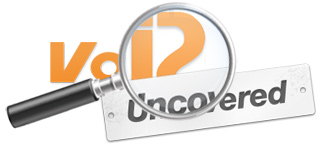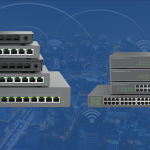Today is a day for transcoding—Sangoma just officially announced its new D100 Card. The D100 supports up to 480 Channels of Premium-Quality Voice Transcoding per card and is designed to create efficiency, cost Savings and top audio quality in open source telephony applications. Octasic also announced a similar card this afternoon, marketed toward larger systems.
“Voice transcoding is an essential, but costly, component of most VoIP applications and networks,” said Frederic Dickey, director of product management at Sangoma. “While software solutions can reasonably handle a handful of channels on a server, our card-based solution allows for hundreds of simultaneous voice transcoding channels in a single server, without compromising on audio quality.”
Most IP telephony applications require the use of multiple types of voice codecs, which are used to digitally compress the voice signals at any given deployment. While voice signals from the Public Switched Telephony Network (PSTN) always come in the form of the G.711 codec, the VoIP terminal equipment and networks support a variety of voice codecs including G.729, G.726, AMR, etc. VoIP infrastructure most often needs to include the capability to mediate between endpoints supporting different codecs, but this ‘transcoding’ digital signal processing task is often costly, resource intensive and can affect the quality of the voice signals if it introduces too much latency or delay.
The D100 card, available in PCI and PCI Express form factors, allows to convert numerous simultaneous channels of voice communication from one type of codec (e.g. G.711) to another (e.g. G.729), without affecting latency or using up precious host CPU resources. The card allows you to run 30, 90, 120, 240 or 480 channels of any-to-any voice codec conversion.
The D100 software drivers provide “plug-and-play” capabilities for both Asterisk® and FreeSWITCH™, two leading open source telephony projects. With the compatible drivers, the open source telephony platforms can use the D100 cards as seamless voice transcoding resources. This means that existing Asterisk and FreeSWITCH applications can readily start leveraging the D100 capabilities. Further, the open source telephony software can be used as a gateway or session border controller to provide network-based transcoding services.
In open source telephony software, if a hosted PBX vendor wants to reduce the cost of bandwidth to reach customers’ SIP phones via a data connection, the cost, scalability and latency issues of software-based transcoding solutions would be prohibitive. However, the D100 card provides a reliable and cost-effective alternative.
In a contact center operation, the cost of voice transport over a data link to connect remote agents can rapidly become a sizeable part of the operational budget. Instead, the D100 card allows the contact center to use the low bit-rate codecs for connecting remote agents to centralized infrastructure and local telephony lines, thereby reducing the cost of connections to remote agents.
Starting at a list price of US$ 750, the D100 card is currently in customer trials and is expected to be generally available for purchase in the current quarter.





